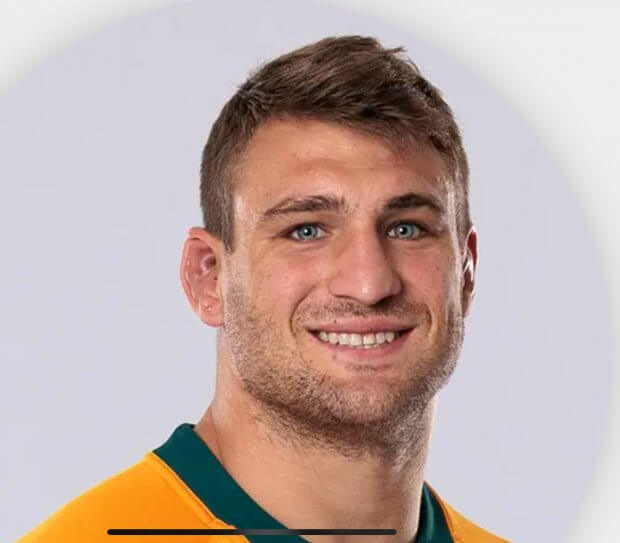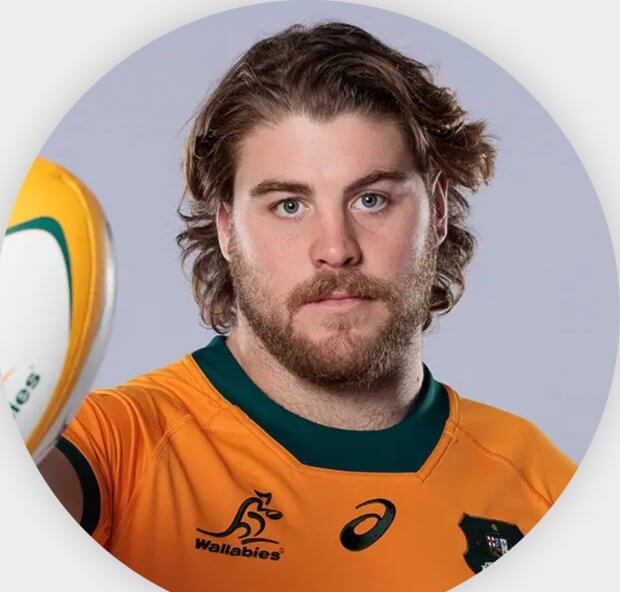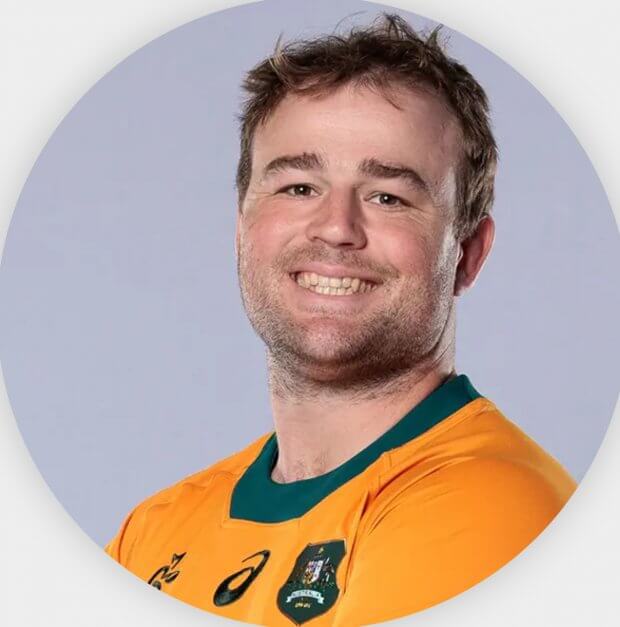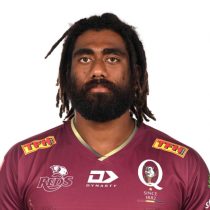Scheduled Website Maintenance
We’re currently in the process of moving to a new and improved server environment. During this transition, the website may experience brief interruptions or temporary outages.
We appreciate your patience while we complete this upgrade. Service will return to normal shortly, with improved performance and reliability.
Thank you for your understanding.
What gate? A backrower’s story.
I always fancied myself as a rangy #8 but one of our club’s coaches took one look at me and I was consigned to the engine room for the duration. The only time I made into the backrow was when I injured my shoulder, couldn’t scrummage without a lot of pain and moved to the flank where I promptly scored a hat trick of tries. Cost me a large jug of beer for my troubles.
Over the years the roles for each position has changed. The openside was the flashy one, noticeable for their blond hair a la Jean-Pierre Rives. Energiser bunnies whose sole target was the opposition #10 by fair means or foul, Paul Ringer circa 1981 step up and take a bow. As the game moved on, they were the ones who introduced link play between forwards and backs til it became a fine art practised by all. The blindside was the guy who you didn’t notice until he wasn’t there. Serge Betsen describing SDs Richard Hill as a player ‘who comes from the shadows, from the darkness’ sums up the blindside to a tee. The #8 was the guy making the runs off the back of the scrum with an uncanny rugby brain that just seemed to know where the next breakdown was going to be. Nowadays, each position still has its own particular skillset, although depending on the opposition it’s not unusual to see a back row with two #7s (who can forget the Pooper) or a lock filling in at #6. Such is the interchangeability of the modern game. Typically, the following criteria apply to all three positions:
- Speed and mobility: goes without saying
- Physicality: strong in the tackle. Hard hitting at the breakdown
- Endurance: a big “engine” to maintain high intensity and work rate throughout the game.
- Tactical awareness: the ability to understand where to be at the right time to provide support or opportunities to attack
- Breakdown prowess – Skill in securing possession, clearing opponents, and poaching the ball.
- Passing skills – Versatility in passing, from close-range pop passes to more structured passes in the attack line, is essential.
The Wallabies have been blessed with some outstanding back row combinations and this current crop are right up there with them. Selection has been a bit of headache and I’m sure St Joe has had the same problem. Nevertheless, I’ve put my head on the chopping block and picked these candidates for the EoYT and beyond.
The Sixes.

Photo courtesy of Rugby Australia
Rob Valetini: age 27, height 1.93m, weight 113kg, caps 56.
Not much to say about this bloke that hasn’t already been said. A guaranteed place in the match-day squads for the EoYT and beyond. Can play either #8 or #6. One of the Wallabies go to ball carriers where he makes good post contact metres. Very strong in defence and makes big hits that hurt, as Tom Curry the SD flanker will testify.

Photo courtesy of Rugby Australia
Tom Hooper: 24, 1.99m, 112kg, caps 17.
Equally at home in both the engine room and at #6. Had a massive season at the Brumbies where he was one of their best players. A big hard hitting unit with a strong lineout presence, he’ll be on the plane north where he’ll be vying for the #6 jersey with Bobby V. Staying on and playing a season with Exeter Chiefs along with teammate Len Ikitau. Our loss, the Chiefs gain.

Photo courtesy of Rugby Australia
Nick Champion de Crespigny: 29, 1.91m, 110kg, caps 3.
Aka The Norman. Something of a rugby nomad. After a few years playing club rugby in the Shute Shield moved north to his ancestral home in 2021 playing for Castres and making 56 appearances. Moved to the Force in 2024 where he enjoyed a stellar season. His hard, aggressive running caught the eye of the selectors and ended with his selection into the Wallabies squad for the Lions tour as an injury replacement. Capped against the Lions in the 1st test but made no further appearances in the series. In the squad for the Rugby Championship. I think he found the step up to international rugby a big challenge where his form did drop off a bit.
The Sevens.

Photo courtesy of Rugby Australia
Carlo Tizzano: 25, 1.80m, 101kg, caps 10.
Another nomad who started at the Force, headed east to the Tahs, north to Ealing Trailfinders before returning to Force for the 2023/24 season. A breakdown specialist, once he gets his hands on the ball, he’s nigh on impossible to move. Wins turnovers at vital times and scores a few tries at the back of driving mauls. Unlucky to be dropped from the squad after Bled 1 where he was a try scorer.

Photo courtesy of Rugby Australia
Fraser McReight: 26, 1.86m, 108kg, caps 34.
Seen by many as the heir apparent to Michael Hooper’s near-decade long stranglehold on both the Wallaby #7 jersey and the captaincy. The captaincy has eluded him but his consistent performances in green and gold has seen him earn plaudits from many. Starting all three tests against the Lions and selection for the RC where he was one of our better forward performers. A first class link player, he has added the ability to secure turnovers to his armoury, with a little help from Matthew Carley😉

Photo courtesy of Getty Images
Charlie Gamble: 29, 1.85m, 107kg, caps 0
Another #7 cut from the same cloth as Tizzano, 2025 was a standout year for Charlie at the Tahs. Starting in 11 of the team’s 14 regular-season matches he amassed an impressive 140 tackles and multiple turnovers. He also impressed playing the full 80 minutes for the First Nations team against the Lions where he recorded 12 tackles and effected four turnovers. Such consistency must have taken him close to selection for the RC.
Number Eights.

Photo courtesy of Rugby Australia
Harry Wilson: 26, 1.96m, 115kg, caps 29.
Current Wallabies captain. He has a fair bit to learn in his captaincy role but there can be no doubt about his commitment during the game. Consistently makes big tackles and big carries with post contact metres. He and Bobby V work very well together. I’ve pencilled them in as my starting #8 and #6 for the EoYT.

Photo courtesy of Rugby Australia
Charlie Cale: 25, 1.95m, 105kg, caps 2.
After making his debut for the Brumbies in 2023 Charlie had what could be described as a rapid rise up the rugby ladder. He was called into the Wallabies squad at the end of an outstanding season with the team in 2024, making his debut for the Wallabies in July 2024 against Wales and appearing in another Test match a week later. Unfortunately, this progress came to an abrupt halt when he suffered a significant back injury that required surgery. The good news is that he’s back in training and should be ready for the 2026 SR season. Although listed as a flanker, I see him as an # in the Kieran Read mould. Tall and rangy, good at the lineout, good hands and rapid over the ground. Could do with adding a few more kg. Definitely one for the future with RWC 2027 in mind. I hope he goes well in 2026.

Seru Uru: 28, 1.99m, 115kg, caps 2.
Originally from Fiji, joined the Reds in 2020 where he’s accumulated 60 odd appearances. Can play either on the flank at #6 or #8. Noted for his powerful runs. The only issue I have is that he can sometimes go MIA during a game which you cannot afford to do at any level.
Who goes, who stays?
I’ve left a few names out for example Rob Leota and Langi Gleeson. Both are now playing in the Pro 14 comp. Also excluded are the likes of Will Harris at the Force, Joe Brial and Liam Wright at the Reds. Competition for places will be fierce but if Joe takes 6 back rowers north then my choices would be McReight, Tizzano, Wilson, Valetini, Hooper and The Norman. That’s not to say guys already playing in Europe won’t come into consideration.

